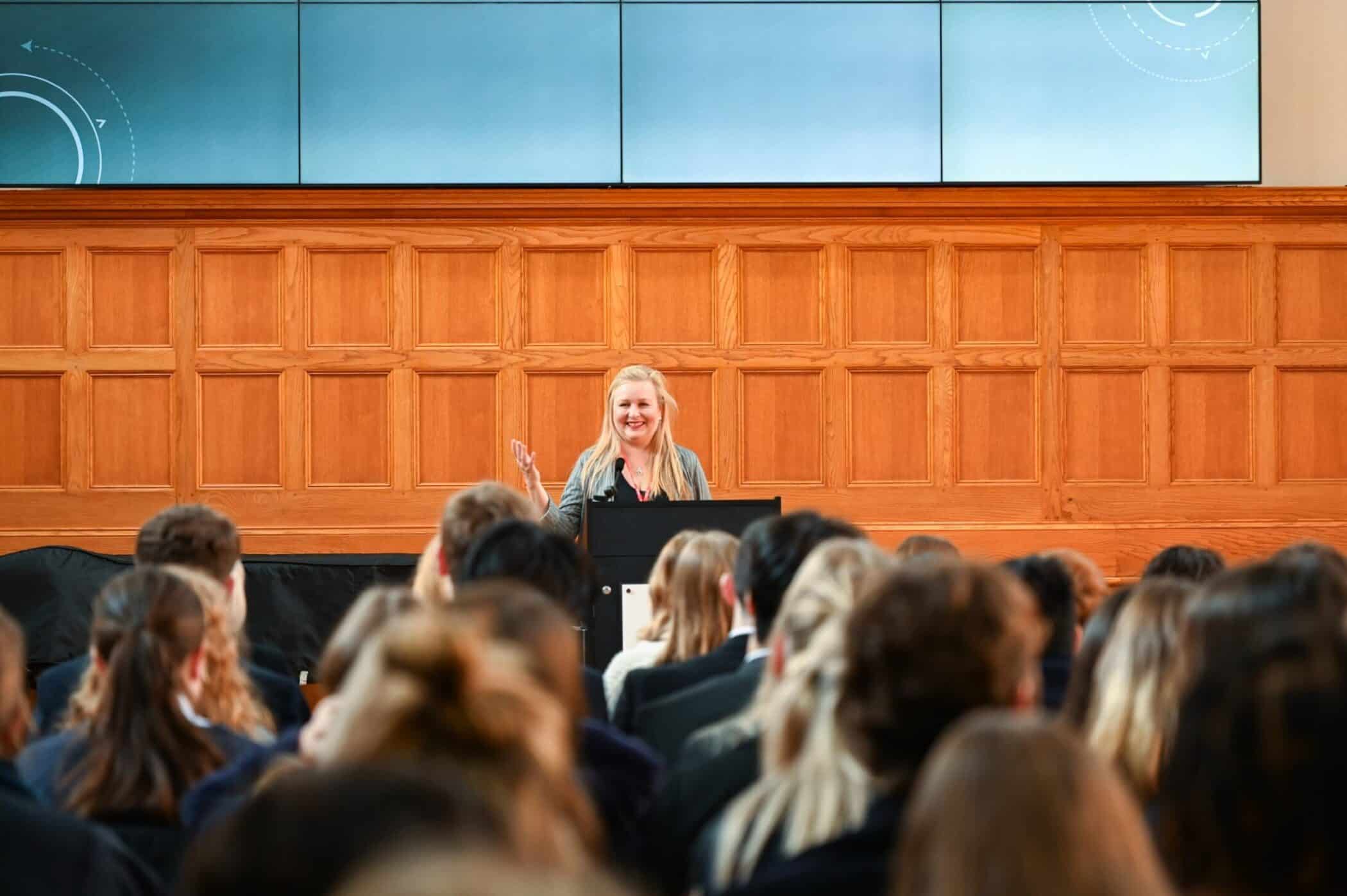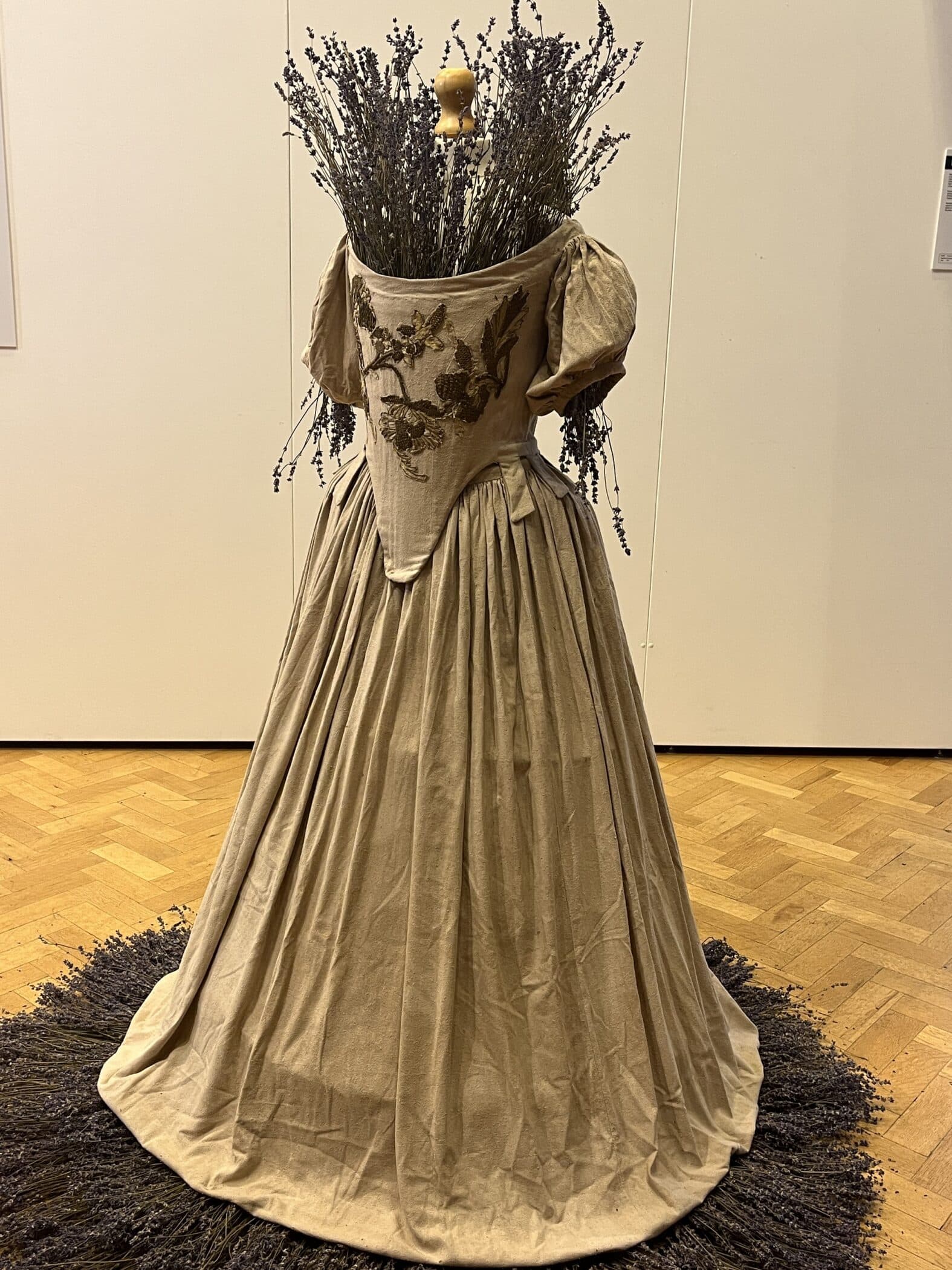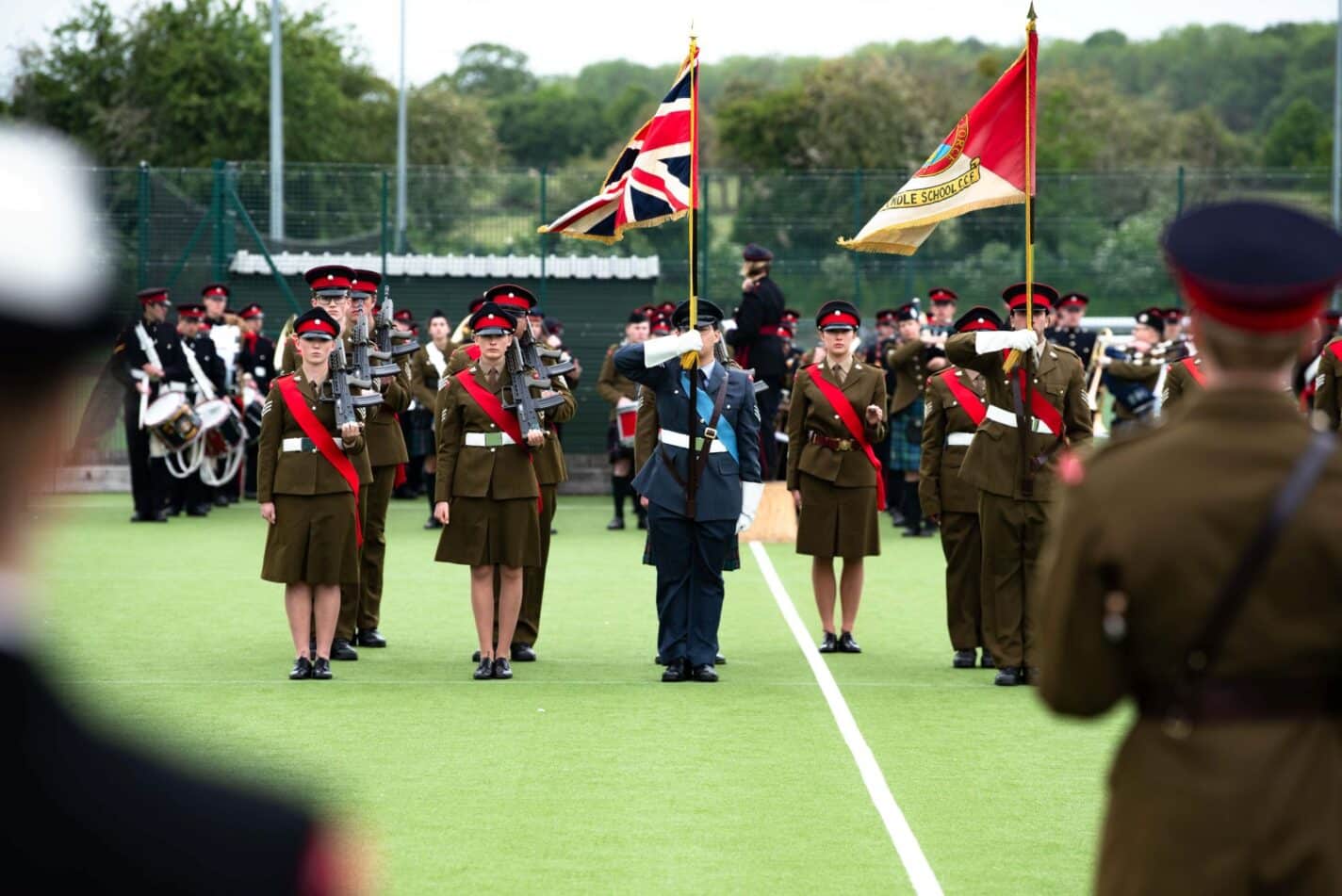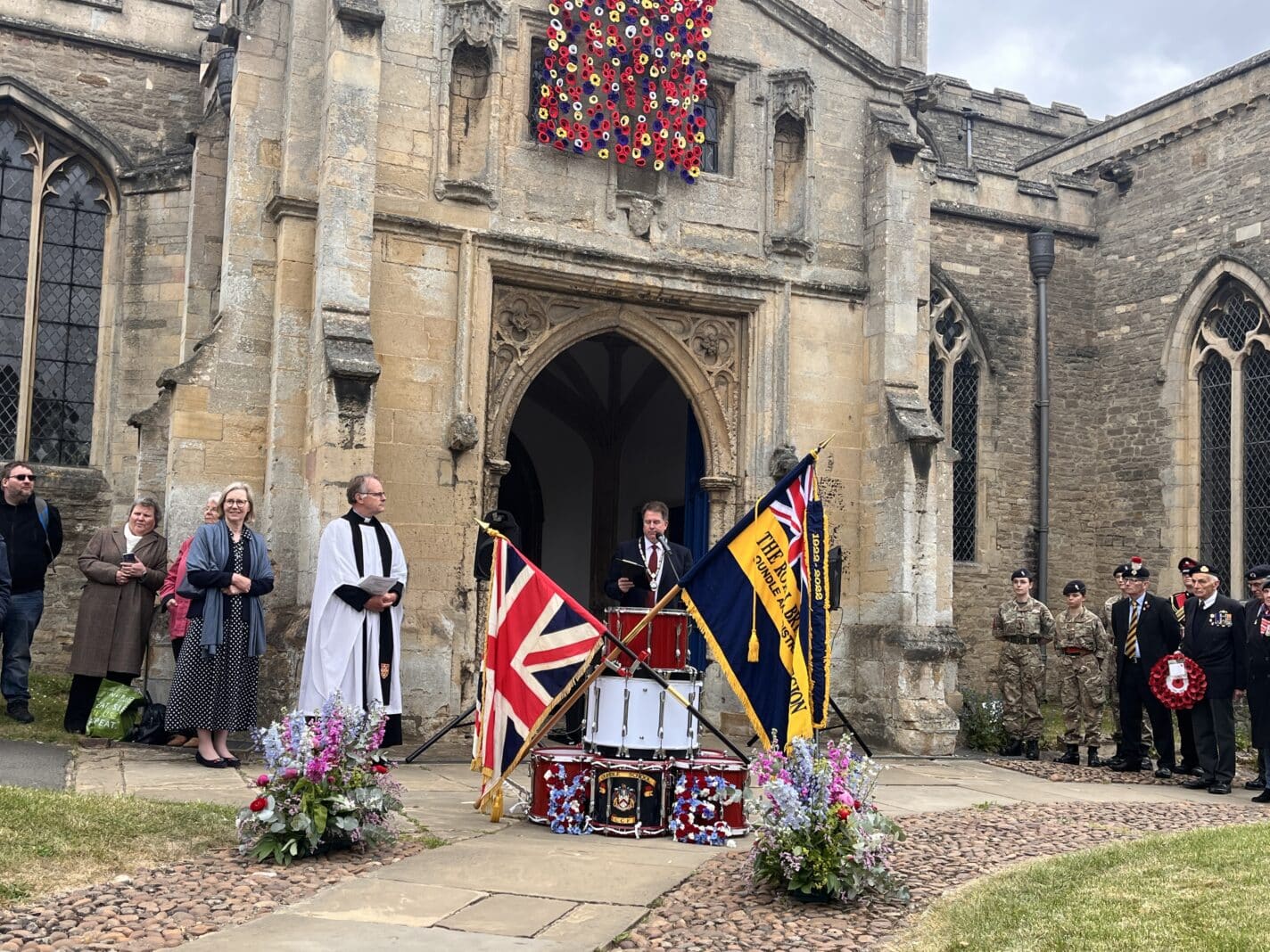Visitors to the Private View of the Yarrow Gallery’s exhibition, BioArt Knowledge: A Solo Exhibition by Anna Dumitriu, entered the gallery through mesmerising full-scale building projections that presaged the exhibition’s innovative displays exploring the relationship between science and biomedicine. The series of digital projections featured her projects, “Susceptible”, based on research into tuberculosis bacteria, and “Precious Cells”, exploring the use of human embryos in scientific research.


Anna Dumitriu is an award-winning British artist who works with BioArt, sculpture, installation, and digital media to explore our relationship to infectious diseases, synthetic biology, and robotics. Her work is based on research and collaboration with UK and European scientific societies and university departments, and has been exhibited internationally.

Pupils at Oundle and at schools in the region took advantage of the opportunities to meet Anna and other collaborators to learn, discuss and respond to the exhibition. Anna was in residence at Oundle for the opening, and over two days led workshops in the Art department for GCSE and A level pupils at Oundle and local secondary schools.

The Upper Sixth Form learned about her body of work in more detail during her talk as part of the Lecture Series. Later in the Term, visits by the Biology and Psychology departments prompted pupils to think about topics related to the intersection of science and art, such as the neuroscience of aesthetics and the psychology of perception.

In the final week, Imperial College, in collaboration with the Royal College of Art, brought its art and science Creative Roots programme to Oundle, using the exhibition as a springboard. A PhD student and an illustrator were in residence for three days, leading six workshops for primary school pupils that explored research methods and visual responses to the natural world.
The Yarrow Gallery exhibition focused on her examination of bacteria in contagious diseases, overlaying historical and cultural interpretations within a scientific context. The seventeenth century styled “Plague Dress” uses silk and lavender to reference the means by which the disease was imported to London and the traditional methods employed to prevent transmission. Original seventeenth century embroidery is impregnated with the DNA of Yesinia pestis bacteria.

The design of the brass-cast amulet titled “Zenexton” is based on antiquated remedies for the plague, but hinges open to reveal the recently developed vaccine against Yersinia pestis, supplied by Oxford University.
Our most recent experience of global infectious disease is represented by “Shielding”, a reconstruction of a Wuhan temporary hospital ward hastily built to cope with the surging virus. The work was inspired by concerns that arose about women at risk of domestic violence who were unable to find safe spaces of their own during the lockdown mandates of the pandemic.

The exhibit occupied both levels of the Yarrow Gallery and also included installations across the road in SciTec.





